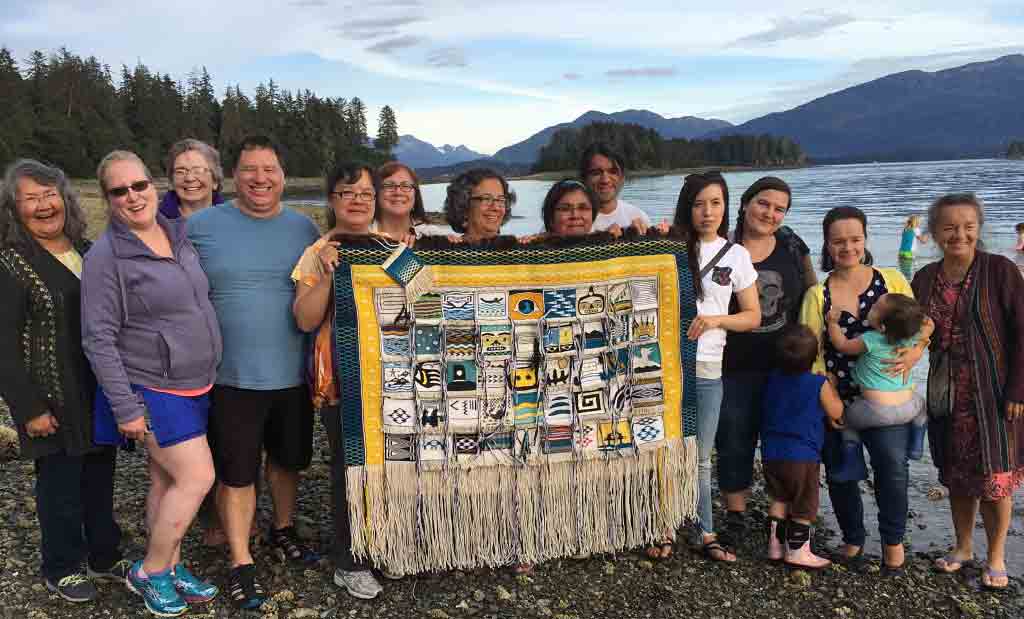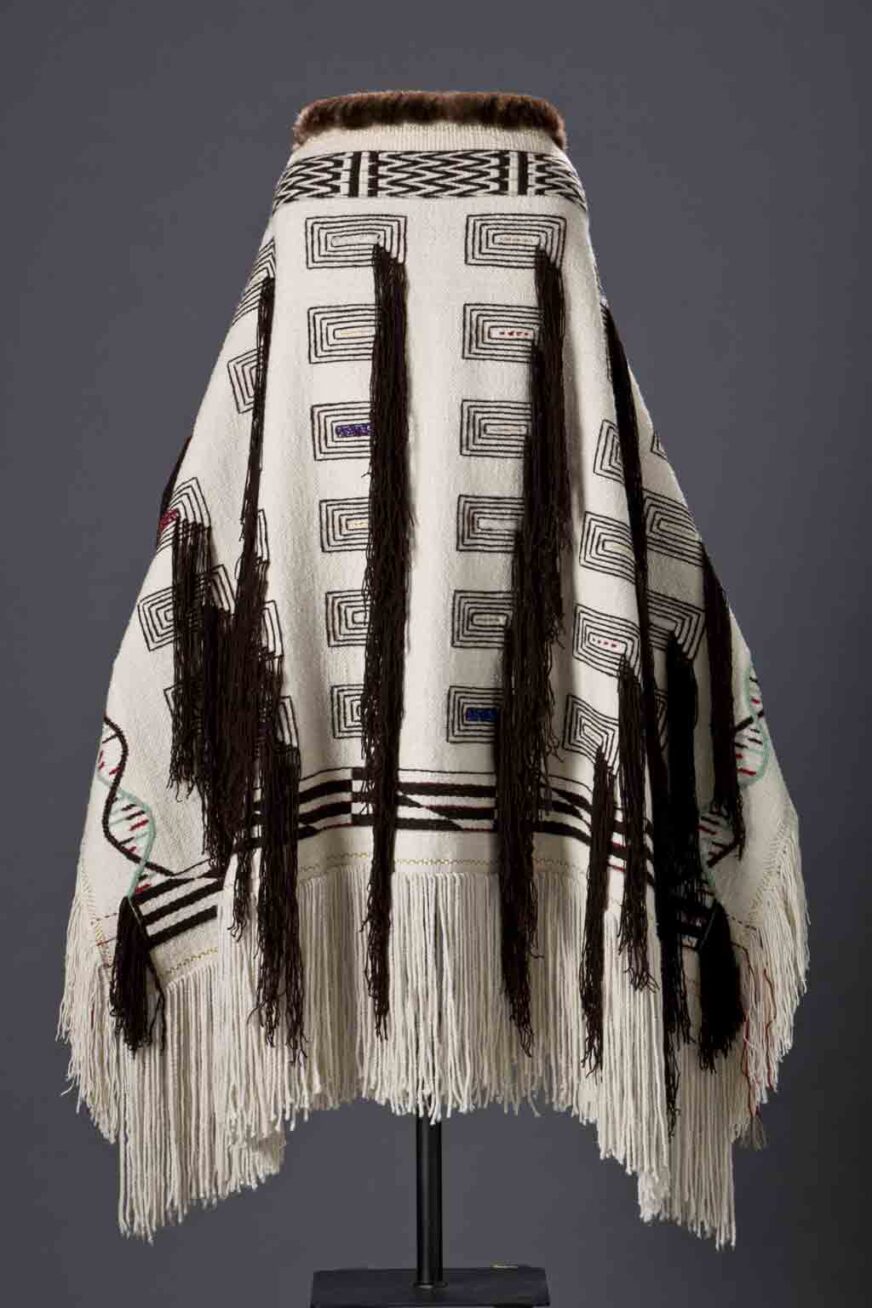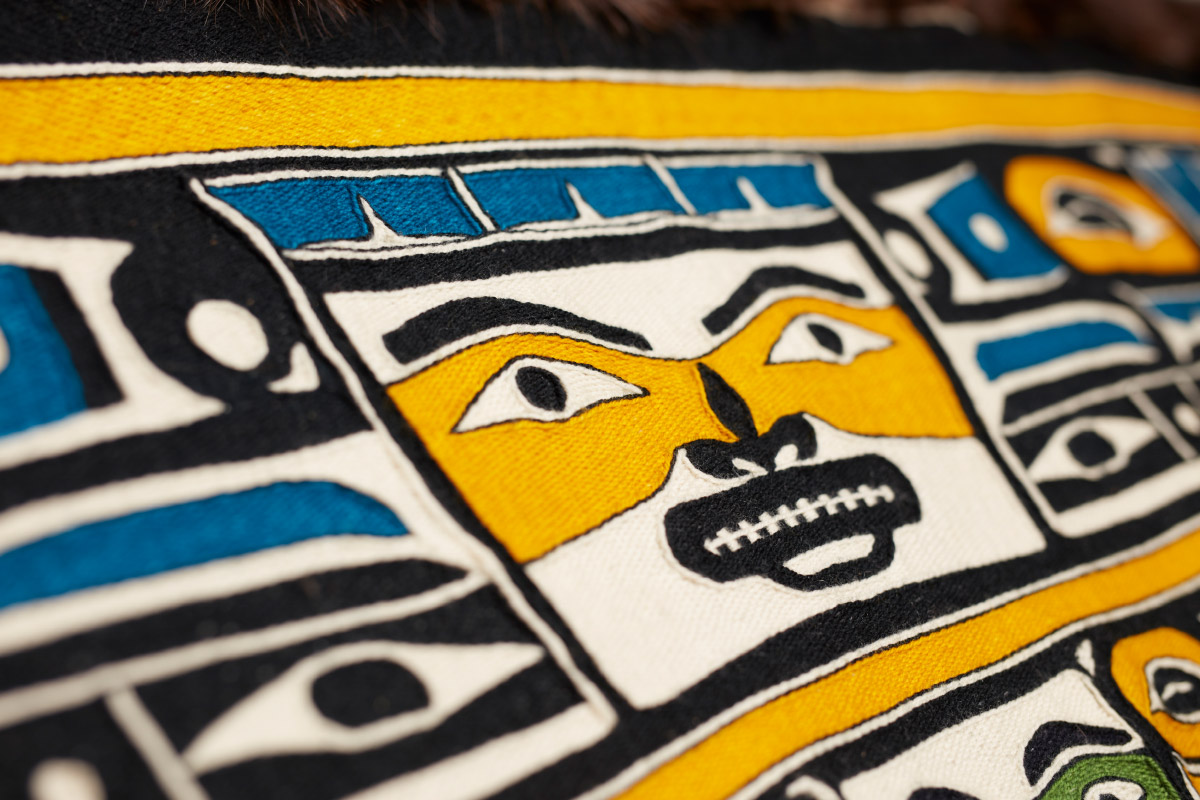Overview
Organized by Tlingit artist and weaver Lily Hope, this upcoming exhibition in the Museum’s Center for Contemporary Native Art will celebrate the artistic achievements and vitality of Chilkat and Ravenstail weavers of the Northwest Coast—illuminating the philosophy and ways of life for women weavers.

Placing on view for the first time a traceable lineage of female Chilkat weaver-teachers in the collection of the Portland Art Museum, the exhibition will feature Clarissa Rizal’s Resilience Robe, completed in 2014, as well as Lily Hope’s Heritage Robe, completed earlier this year. The exhibition will also include a series of Ravenstail robes from Teri Rofkar of Sitka, Alaska, who was a scientist and historian, using all the ancient traditional materials in her masterful works. Finally, the exhibition will feature a robe called Weavers Across the Waters, a community-woven robe including work by more than 40 weavers from the Northwest Coast and into Canada, all of whom contributed an original weaving to the full-size robe.
The cultural practice of Chilkat weaving originated among the Tsimshian, and was retained by traditional Tlingit weavers in the Chilkat Valley of Alaska. Weaving these textiles took months of preperation, including harvesting cedar bark and processing mountain goat hair. The weavers spin earth and animal together by hand for more than six weeks to create the 1,000 yards of warp needed to weave ceremonial robes. Robes are woven on an upright loom, with all tension controlled by the weaver’s fingers. Most robes take more than a year to finish. “A woman who maintains the continuity of weaving values the way of life and what it means to be a true descendant of a Master Chilkat Weaver,” said Hope. “We are propelled to engage in a dialogue that re-evaluates a system that largely overlooks or underappreciates Native women artists of the Northwest Coast.”

Special thanks to the Confederated Tribes of the Grand Ronde, the Native Arts and Cultures Foundation, and the Native American Art Council of the Portland Art Museum for their generous support of this exhibition.
The Center for Contemporary Native Art was established through a grant from the Institute of Museum and Library Services and generous gifts from Mr. Mark J. and Dr. Jennifer Miller, Taffy Gould, Anonymous, and Exhibition Series Funders.

